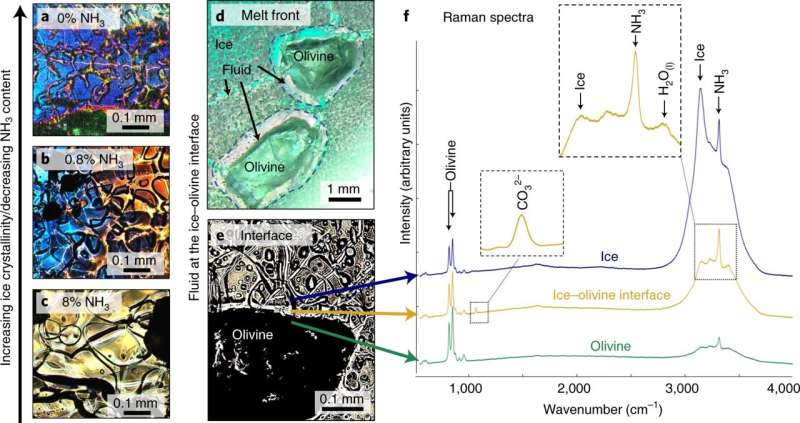Fig. 1: Characterization of the ice, unfrozen solution and ice–olivine interface. Credit: Nature Astronomy (2022). DOI: 10.1038/s41550-022-01613-2
A team of researchers affiliated with several institutions in France and one in Germany has found that chondrite-analog materials can undergo chemical alteration processes at sub-zero temperatures. In their paper published in the journal Nature Astronomy, the group describes subjecting a chondrite analog (olivine) to conditions similar to some other worlds in the solar system.
Prior research has shown that chemical reactions between water and rock on other worlds (or moons) can make them geologically active, and possibly habitable. And until now, space scientists have assumed that such bodies must be reasonably warm (above freezing) for the interactions to occur—thus, cold bodies, such as many icy moons, are excluded from consideration as habitable entities. In practice, this means that only those moons closest to their host planets were considered as possibly habitable. In this new effort, the researchers noted that close-up images of Saturn's moon Enceladus (courtesy of Cassini) in 2008 showed the likelihood of subsurface oceans and water ice plumes seeping from the surface in the southern polar region. These features suggested that water/rock chemical reactions were occurring despite the subzero temperatures. To better understand what might be happening, they conducted experiments in their lab with a chondrite-analog material.
The work involved using olivine as a chondrite analog of surface material found on Enceladus. They dissolved several samples in an alkaline solution and placed each in isolated containers at three temperatures: −20, 4, and 22 C. They stored the samples for 442 days. During monitoring, they found that water/rock chemical reactions were occurring in all of them, despite one of them being in a below-freezing environment. They suggest the reason such interactions occurred was because of the formation of a water film between the ice and rock that remained unfrozen over the course of the experiment. They conclude that chondritic minerals on icy bodies of a certain size may experience water/rock chemical reactions, allowing them to be included as possible habitable bodies.
More information: Amber Zandanel et al, Geologically rapid aqueous mineral alteration at subfreezing temperatures in icy worlds, Nature Astronomy (2022). DOI: 10.1038/s41550-022-01613-2
Journal information: Nature Astronomy
© 2022 Science X Network
























